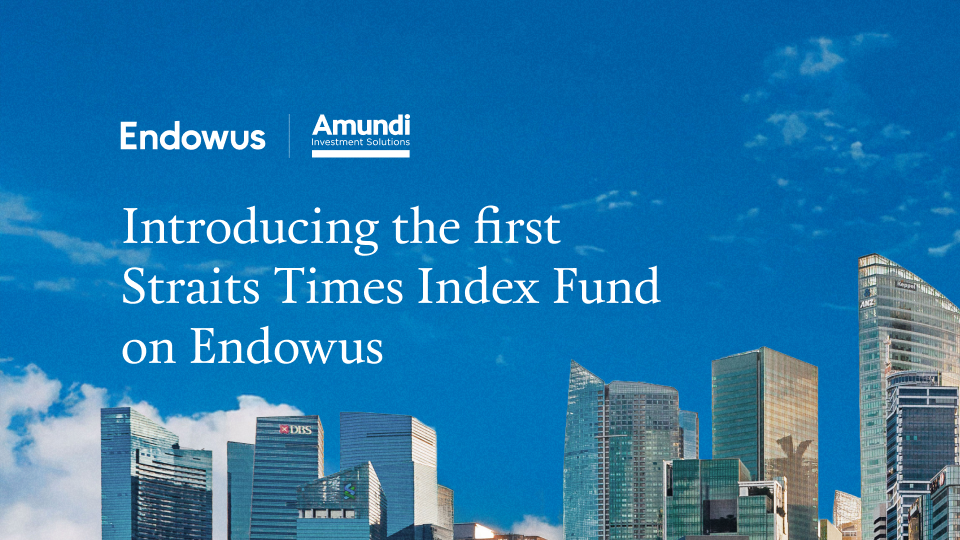Register for the event
Endowus invites you to our exclusive event with Macquarie Asset Management, as we discuss unlocking opportunities in Infrastructure- a $1.3tn asset class.
This event is reserved for Accredited Investors (AIs) only. To register for the event, please indicate one of the following:
As Singapore approaches its diamond jubilee, commemorating 60 years of independence, it’s an opportune moment to appreciate the unique blend of factors that define this island nation as a financial and investment hub.
What makes Singapore special
The nation consistently ranks among the highest globally for PPP-adjusted GDP per capita and is firmly established as a major aviation, financial, and maritime shipping hub.
Further cementing its reliability is its distinction as the only country in Asia to hold a AAA sovereign credit rating from all major agencies, including Standard & Poor’s, Moody’s, and Fitch. This unparalleled stability is a testament to Singapore's strong governance and pragmatic approach, and long-term vision for policy-making.
It is within this robust and forward-looking context that the local stock market is now gaining renewed attention. The recent February 2025 Budget announcement included significant initiatives aimed at enhancing the local bourse’s structure and appeal.
This strategic focus signals a deliberate effort to evolve the market beyond its historical characteristics, coinciding with a period of strong performance. Indeed, the Straits Times Index (STI), which tracks the performance of the top 30 largest and most liquid companies listed on the Singapore Exchange, has recently demonstrated notable performance.
The STI has recently caught attention with a strong performance, delivering a 23.9% total return (including dividends) over the past 12 months. This stands out significantly against its 5.9% annualised returns over the last decade.
What has contributed to STI’s returns
Several key factors unique to Singapore have contributed to this momentum.
Firstly, Singapore’s stable and predictable political landscape provides a robust foundation, which naturally builds investor confidence and supports long-term economic planning.
This stability, combined with the STI’s attractive dividend yields from its constituent companies and a stable Singapore dollar, which helps protect investors’ purchasing power, has made the market appealing. Consistent capital inflows into Singapore have further amplified this appeal.
These positive dynamics have particularly benefited the index’s largest components: DBS Group, OCBC Bank, and UOB. These three major local banks collectively hold a very substantial weighting, often accounting for almost half of the STI’s value.
In a global context, the STI has shown formidable returns, outperforming indices in Europe, Japan, and China, over the past five and 10 years.
This stands in interesting contrast to the US market, which has delivered some of the strongest 10-year returns globally, with an annualised return of 11.8% (including dividends, in SGD terms). This long-term US strength was largely driven by its large-cap technology companies. However, over the more recent 12-month period, the US market's return was a more modest 5.5% (in SGD terms), influenced by factors such as rising geopolitical risks, high valuations in certain tech segments, and a weaker US dollar.
Globally, the STI’s long-term performance has only been outpaced by markets in India and the US on a five- and 10-year basis.
Access Singapore’s stock market via passive index
For many investors, building long-term wealth effectively begins with understanding index funds. Passive investment vehicles are designed to simply mirror the performance and composition of a specific index. Whether structured as a mutual fund (also known as a unit trust) or an ETF, their fundamental aim is to provide broad market exposure rather than relying on individual stock picking.
The key distinction is trading flexibility: ETFs trade like stocks throughout the day, while unit trusts transact once daily at NAV, suiting long-term holders.
Importantly, while some may assume unit trusts are always more expensive, lower-cost share classes exist that offer management fees comparable to or even below those of ETFs for similar exposure.
Read: 3 reasons why unit trusts are great for passive index investing
The role of Singapore stocks play in a diversified portfolio
For individual investors, the ongoing reforms in Singapore’s equity market and the recent performance of the STI present an evolving landscape.
While these developments are certainly encouraging, it is crucial to distinguish between market news and a disciplined, long-term investment strategy. Attempting to trade on news or make short-term tactical bets in response to specific policy announcements or recent performance spikes carries inherent risks and is generally not conducive to consistent wealth accumulation.
Despite the strong recent performance of the STI, a core principle of sound investment strategy remains the belief that a diversified global portfolio across countries, sectors, and asset classes makes the most sense on a long-term basis.
Read: The laws of nature and why markets go up in the long term
The emphasis should remain on how Singapore equities can play a complementary role, contributing to portfolio resilience and long-term objectives, rather than being treated as a standalone, speculative opportunity.
For those with existing global portfolios, or those with an overweight allocation to specific regions like the US or China, strategically incorporating exposure to the Singapore market can offer valuable diversification benefits—providing equity exposure that minimises currency exposure for SGD-based investors, attractive dividend yields, and a steady political outlook that can complement other growth-oriented or more volatile segments of their overall investment allocation.
Concentrating solely on the STI Index also means foregoing exposure to critical global growth drivers, such as the hyperscalers dominating the technology landscape (largely listed in the US), the luxury goods and healthcare innovators in Europe, the world’s largest automotive manufacturers, and the vast consumption stories unfolding in the US, China, and increasingly, India.
Read more: How to approach core and satellite investing with Endowus
Invest in our home – Singapore
This combination of attributes of Singapore stocks can act as a stabilising and income-generating element within a broader, globally diversified portfolio.
To facilitate access to this market segment, we are pleased to announce the launch of the lowest-cost STI index fund*, Amundi Singapore Straits Times Fund, providing investors an efficient means to gain exposure to the Singapore equity market as part of their comprehensive investment strategy.
Enjoy low-cost access to diversification with the Amundi Singapore Straits Times Fund offering the lowest total expense ratio among peers, with a management fee of just 0.15% p.a.**, and no transaction or sales charges. Available for Cash and SRS investments.
*Lowest TER in comparison to other STI ETFs in the markets as of 17 July 2025.
**An Endowus fee applies









.webp)




%20(1).gif)



.jpg)


%20F1(2).webp)

.webp)






.webp)